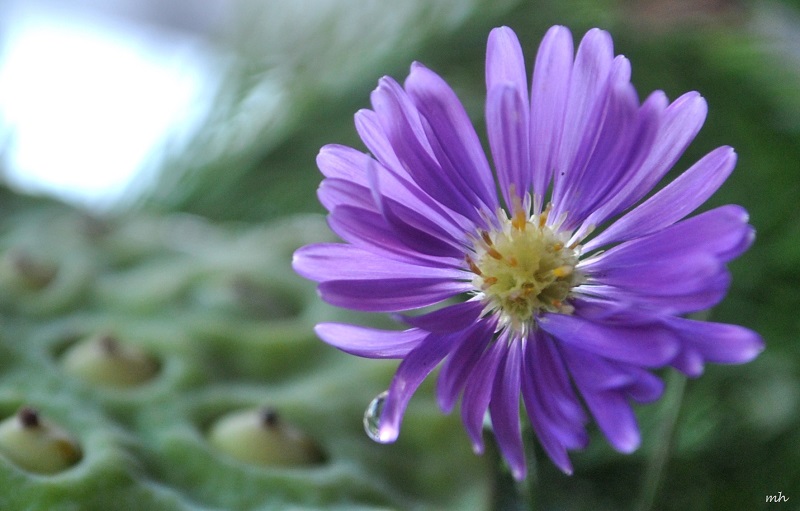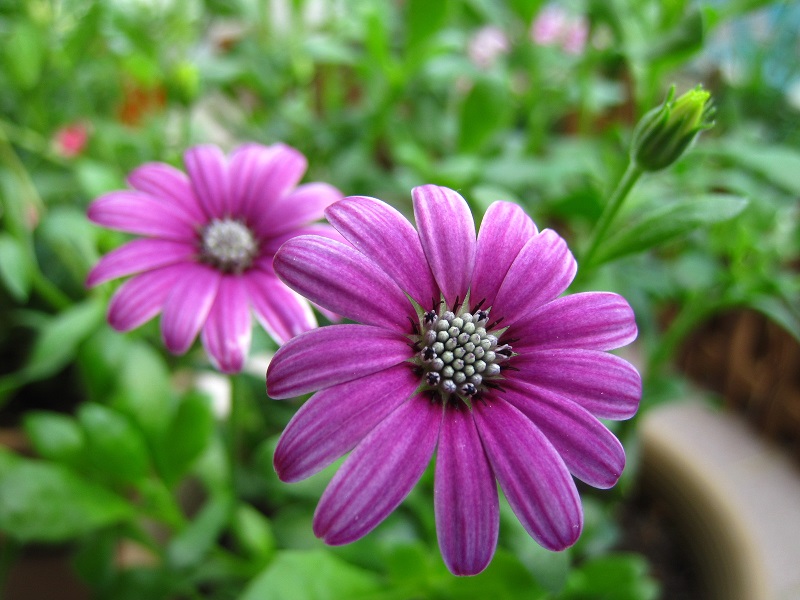Chrysanthemums, often known as “mums,” are renowned for their vibrant colors and elegant forms. Among the many varieties, the purple chrysanthemum stands out with its regal hue and distinct charm. This guide explores the botanical characteristics, cultivation tips, cultural significance, and diverse applications of the purple chrysanthemum, highlighting why it remains a cherished flower in gardens and floral arrangements around the world.
Botanical Characteristics
Description of the Plant
The purple chrysanthemum features a vivid purple color that ranges from soft lavender to deep violet. This plant typically has a bushy growth habit with lush green foliage, providing a striking contrast to its colorful blooms. The flowers consist of multiple layers of petals, which can be daisy-like or more intricate, depending on the variety. This diversity in petal structure enhances the flower’s appeal and makes it a favorite among gardeners and florists.

Growth Requirements
Purple chrysanthemums thrive in well-drained soil that is slightly acidic to neutral. They prefer full sun, which promotes abundant blooming and robust growth. Ideal temperatures for these plants range from 60 to 70°F (15 to 21°C), although they are relatively adaptable. Consistent watering is crucial, but avoid waterlogging. Fertilizing with a balanced, all-purpose fertilizer during the growing season supports vigorous growth and vibrant blooms.
Cultivation and Care
Planting
To grow purple chrysanthemums successfully, plant them in spring after the last frost or in fall before the first frost. Space the plants adequately to allow for their full growth, and choose a location that receives at least six hours of sunlight daily. When planting, ensure the soil is loose and well-draining to prevent root rot.
Maintenance
Regular maintenance is essential for healthy purple chrysanthemums. Deadheading spent blooms encourages new flowers and extends the blooming period. Pruning the plants after flowering helps maintain a compact shape and promotes robust growth. Watch for common pests such as aphids and spider mites, and manage diseases like powdery mildew with appropriate treatments. In colder climates, protect the plants over winter by mulching around the base or bringing potted plants indoors.
Symbolism and Cultural Significance
Symbolism in Different Cultures
Purple chrysanthemums hold significant meaning in various cultures. In Japan, they symbolize longevity and rejuvenation, with the purple variety often associated with nobility and elegance. In Chinese culture, chrysanthemums represent joy and longevity, and purple is a color of respect and admiration. These flowers are frequently featured in festivals and traditional ceremonies, highlighting their cultural importance.
Symbolic Meanings
The deep purple hue of chrysanthemums conveys a sense of mystery and grace. It represents nobility and dignity, making it an ideal choice for honoring loved ones or adding sophistication to any setting. The flower’s association with admiration and respect enhances its appeal as a meaningful gift.
Uses and Applications
Floral Arrangements
Purple chrysanthemums are popular in floral arrangements due to their striking color and versatility. They can be used to create dramatic bouquets or as a focal point in mixed arrangements. Their long-lasting blooms make them a favorite for both casual and formal occasions.
Medicinal and Culinary Uses
In traditional medicine, chrysanthemums are used for their potential health benefits. Chrysanthemum tea, made from the flowers, is believed to have calming properties and is often consumed for its soothing effects. Additionally, chrysanthemum petals can be used in cooking, particularly in Asian cuisines, to add flavor and color to dishes.

Varieties and Hybridization
Notable Varieties of Purple Chrysanthemums
Several notable varieties of purple chrysanthemums are available, each with unique characteristics. For example, the ‘Purple Rain’ variety features large, daisy-like blooms with a vivid purple hue, while the ‘Lavinia’ variety offers a softer lavender shade with intricate petal arrangements.
Hybrid Varieties
Hybrid chrysanthemums combine traits from different varieties to produce new, desirable features. Hybrid purple chrysanthemums may offer enhanced colors, longer blooming periods, or improved disease resistance. These hybrids cater to gardeners seeking specific attributes and contribute to the ongoing development of chrysanthemum varieties.
In summary, the purple chrysanthemum is a symbol of elegance and nobility, admired for its striking color and cultural significance. Whether you are a seasoned gardener or a floral enthusiast, understanding the characteristics and care requirements of this magnificent flower enhances your ability to cultivate and appreciate its beauty. From its symbolic meanings across cultures to its various uses in floral arrangements and traditional medicine, the purple chrysanthemum continues to captivate and inspire. Embrace this enchanting flower in your garden or as part of your floral creations, and let its timeless allure brighten your days.
